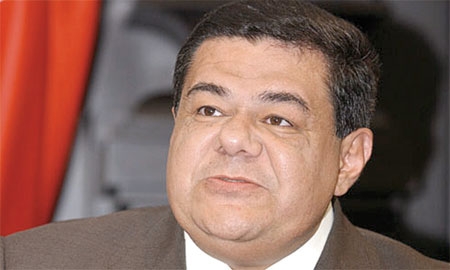Tucked between two national parks on the coast of the Gulf of Mexico, the state of
Campeche, considered to be the world’s second ‘lung’ after the Amazon for the amount of oxygen it releases into the air, is truly one of Mexico’s undiscovered gems.
Campeche boasts one of the lowest population densities among Mexican states with just 805,000 inhabitants. Over 40% of the state’s 22,300 square miles is natural reserve. The capital city, San Francisco de Campeche, is a world heritage site as is its Mayan city of Calakmul. Indeed, Campeche is considered to be the heart of Mexico’s Mayan culture.
Campeche could also easily become the breadbasket of Mexico. It is already the country’s main producer of rice and corn, and a major producer of soy and palm oil, and Campechanos have recently begun growing different kinds of seaweed for use in bio-fuel.
If that weren’t enough, Campeche has oil. Its fields have produced 80% of Mexico’s oil over the last 15 years, and 25% of the country’s natural gas production.
Finally, Campeche is Mexico’s safest state. The definition of a campechano according to both Spain’s Royal Academy and Mexico’s Academy of Language is a person of a friendly and amicable nature.
While many Mexicans visit Campeche for its cultural offer, Americans come to fish. Campeche’s natural environment far from the maddening crowds is an asset the state government is intent on developing further. Indeed, it wants to rebuild the entire state economy around the conservation of its natural resources. Environmental tourism is just one aspect of this.
Here, State Governor Fernando Ortega Bernes and State Secretary for Industrial and Commercial Development Enrique Escalante speak on Campeche’s immense natural reserves and the launch of the Campeche Green campaign.
‘ONE OF THE GREAT ECONOMIC ADVANTAGES OF THIS STATE IN THE PAST, PRESENT AND FUTURE IS THE IMMENSE WEALTH OF ITS NATURAL RESOURCES. THIS IS EVIDENT IN ITS JUNGLES, COASTLINE, RIVERS, LAKES, AND OF COURSE, BENEATH ITS SOIL’
‘WE HAVE THE LARGEST BIOSPHERE RESERVE IN THE WORLD AFTER THE AMAZON. THIS REPRESENTS BOTH A CHALLENGE AND AN OPPORTUNITY. THERE ARE FEW PLACES IN THE WORLD WITH THIS PARADOX: WE ARE A SIGNIFICANT PETROLEUM PRODUCER AND AT THE SAME TIME A GLOBAL LUNG FOR PURIFYING OXYGEN’
|
How has Campeche managed to position itself as one of the country’s main economies?Governor Ortega: Firstly, it’s important to point out that one of the great economic advantages of this state in the past, present and future is the immense wealth of its natural resources. This is evident in its jungles, coastline, rivers, lakes, and of course, beneath its soil. In the 19th century, Campeche, along with Brazil, was the world’s largest exporter of logwood dye at a time when industrial dyes didn’t yet exist. Today, ciricote and blackwood, which are highly valued on the international wood market and especially in the U.S., are major Campeche exports. Our petroleum production contributes 379 billion pesos [$32.5 billion] per year to the federal coffers.
Of course, we mustn’t overlook Campeche’s contribution to the world’s oxygen levels either. We have the largest biosphere reserve in the world after the Amazon. This represents both a challenge and an opportunity. There are few places in the world with this paradox: we are a significant petroleum producer and at the same time a global lung for purifying oxygen.
How do you plan to use these reserves moving forward?
Governor Ortega: Over the next few months, the Campeche Green campaign will be launched through the efforts of both the state and federal governments. The campaign is not only a conservation strategy but also an economic policy. As 42% of our territory is protected as a natural area, we’re faced with the challenge of combining economic development with environmental conservation, something we’ve managed to do successfully so far.
We’re looking at the development of forestry, as well as adventure tourism. We’re also convinced of Campeche’s agricultural potential, and we’re actively promoting investment in the sector, as well as in livestock. I’ve always said that this is a state touched by the hand of God; as we are a humid tropic, our soils are highly fertile. We’ve even been able to grow grapes here, which normally need a dry climate.
Secretary Enrique Escalante: We’re looking to strengthen our advantages, and with such a large area of natural reserve, we have a lot to offer in tourism. We want to become known as a restful nature destination. This is what we’re portraying on the international market. This promotion must be accompanied by infrastructure and a wider range of services. We really have the best of many worlds here, with nearly 350 miles of coastline and a mangrove forest unique in Latin America.
What investment is being made in infrastructure?Secretary Enrique Escalante: We’re modernizing the City of Carmen port. It was originally a fishing port, and over the years, it has become more associated with Mexican Petroleum, or PEMEX. It’s Mexico’s busiest port. We’re also investing in the port at Ceiba Beach, which will have access to rail links and a three-mile long multimodal viaduct.
Governor Ortega: The Ceiba Beach port will represent an important link with the east coast of the U.S. The maritime border between Mexico and the U.S. can become more effective with better infrastructure in the Mexican states along the Gulf of Mexico, and we’re working along those lines.

0 COMMENTS